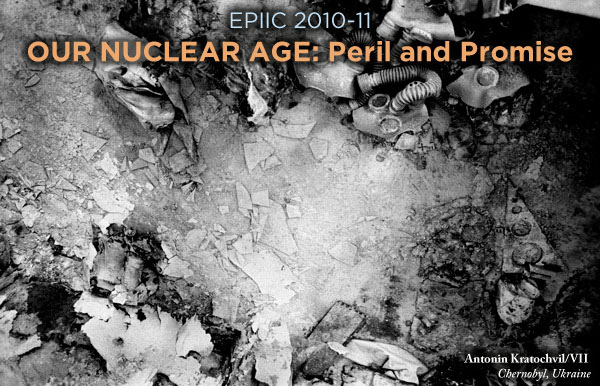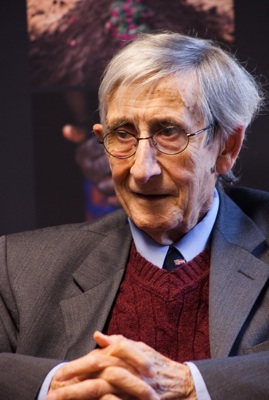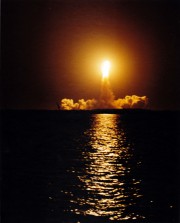2011 Our Nuclear Age: Peril and Promise

EXP 91F
Tuesdays and Thursdays, 3:00-5:30pm
Bi-monthly Discussion Sessions TBA
| EPIIC is open to undergraduate and graduate students of all majors • EPIIC coursework can count toward credit in many majors • Full Credit/Letter Graded |

--Freeman Dyson,
theoretical physicist and mathematician


 Against the backdrop of the arc of nuclear history from the race for the atomic bomb and the secrecy and espionage of the Manhattan Project to President Obama’s 2010 U.S. Nuclear Posture Review and Nuclear Security Summit, this year’s EPIIC colloquium will explore our global nuclear future.
Against the backdrop of the arc of nuclear history from the race for the atomic bomb and the secrecy and espionage of the Manhattan Project to President Obama’s 2010 U.S. Nuclear Posture Review and Nuclear Security Summit, this year’s EPIIC colloquium will explore our global nuclear future.
Nine countries currently control 23,000 nuclear weapons. During the Cold War, the superpowers amassed nuclear arsenals containing the explosive power of one million Hiroshimas. More than two decades after the fall of the Berlin Wall, the U.S. and Russia still have a combined total of more than 20,000 nuclear weapons. One Hiroshima-size weapon alone, detonated in London’s Trafalgar Square in the middle of a workday would cause an estimated 115,000 fatalities and 149,000 injuries. A regional nuclear war between India and Pakistan could lead to 20 million local fatalities and more than one billion global fatalities from the direct impact on the world’s atmosphere and agricultural supply.
The class will look at the history of failed and successful arms control regimes, the threat posed by both declining and rising nuclear states, the dilemma of science in the service of military objectives, resource wars in Africa and elsewhere to control and exploit uranium, Israel’s Osirak raid and concerns over temptations of preemptive strikes and preventive war, the proclaimed “nuclear renaissance” and the building of new nuclear energy plants, the relevance and ethics of deterrence thinking, and the political, diplomatic, civil and military complexities of proliferation case studies, including Pakistan, South Africa, Libya, Iran, and North Korea. How realistic is the threat of a terrorist suitcase bomb? Is nuclear terrorism the most pressing, dangerous and neglected feature of the world’s nuclear predicament?
Working with experts, we will consider the implications of Iran achieving nuclear capacity “breakout”, the U.S. decision to abandon the European theater missile shield, the concerns over China’s Taibai Mountain and the US’s Yucca Mountain, the security status of tactical nuclear weapons, the vulnerability of nuclear reactor laboratories, the diffusion of nuclear knowledge and technology through the Khan network, whether nuclear energy and non-proliferation can co-exist, and the US military’s nuclear survivability.
 We will explore the psychology of nuclear proliferation, the effectiveness of citizen action movements such as the Nuclear Freeze Movement and the Global Zero initiative, how nuclear terror and catastrophe are rendered in popular culture, and if a nuclear-free world is actually attainable and desirable.
We will explore the psychology of nuclear proliferation, the effectiveness of citizen action movements such as the Nuclear Freeze Movement and the Global Zero initiative, how nuclear terror and catastrophe are rendered in popular culture, and if a nuclear-free world is actually attainable and desirable.
Are the experts and editors of the Bulletin of Atomic Scientists justified in moving back the minute hand on the “Doomsday” clock?
Among others, we will be working with the scientists and nuclear experts and policy makers of the Blue Ribbon Commission on America’s Nuclear Future, the Nuclear Regulatory Agency, International Pugwash, the Federation of American Scientists, the Union of Concerned Scientists, International Physicians for the Prevention of Nuclear War, the Ploughshares Foundation, the National Security Archive, the World Security Institute, as well as political scientists, diplomats, and investigative journalists.

